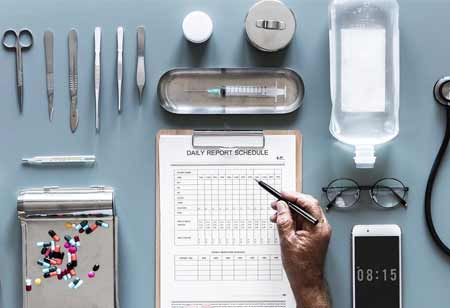Thank you for Subscribing to Healthcare Business Review Weekly Brief
The Significance of Medical Equipment Maintenance

Be first to read the latest tech news, Industry Leader's Insights, and CIO interviews of medium and large enterprises exclusively from Healthcare Business Review
Thank you for Subscribing to Healthcare Business Review Weekly Brief

By
Healthcare Business Review | Thursday, November 02, 2023
Stay ahead of the industry with exclusive feature stories on the top companies, expert insights and the latest news delivered straight to your inbox. Subscribe today.
Robust medical equipment maintenance is not only a fundamental element of patient safety but also a cost-effective approach to prolonging the life of these vital tools. By following manufacturer guidelines, conducting regular inspections, and maintaining detailed records, healthcare facilities can enhance the quality of care while ensuring compliance with legal requirements.
Fremont, CA:Inadequate maintenance of medical equipment presents grave risks to patient health and safety. A regular maintenance program is indispensable to ensure the proper functioning of equipment, minimizing the chances of malfunctions that could jeopardize patient well-being. Furthermore, maintaining medical equipment over time not only prevents costly breakdowns and repairs but also extends the lifespan of these essential tools. In many healthcare facilities, adherence to maintenance and calibration requirements is not just best practice but a legal necessity.
The Road to Effective Medical Equipment Maintenance
Follow Manufacturer Guidelines:
The manufacturer provides invaluable guidance on the appropriate use and maintenance of medical equipment. Strictly adhering to these instructions is vital to ensure safe and effective equipment usage.
Regular Cleaning and Disinfecting:
Consistent cleaning and disinfection are paramount for infection prevention. Employ the recommended cleaning agents in accordance with provided instructions to maintain a sanitary environment.
Perform Regular Inspections:
Routine inspections are the cornerstone of proactive maintenance. They allow the identification and resolution of equipment issues before they escalate. Equipment should be inspected both before and after each use, with qualified technicians conducting regular assessments.
Keep Records:
Detailed records of all maintenance and repairs must be meticulously maintained. These records serve as a valuable tool to spot recurring issues and stay ahead of the equipment's maintenance requirements.



